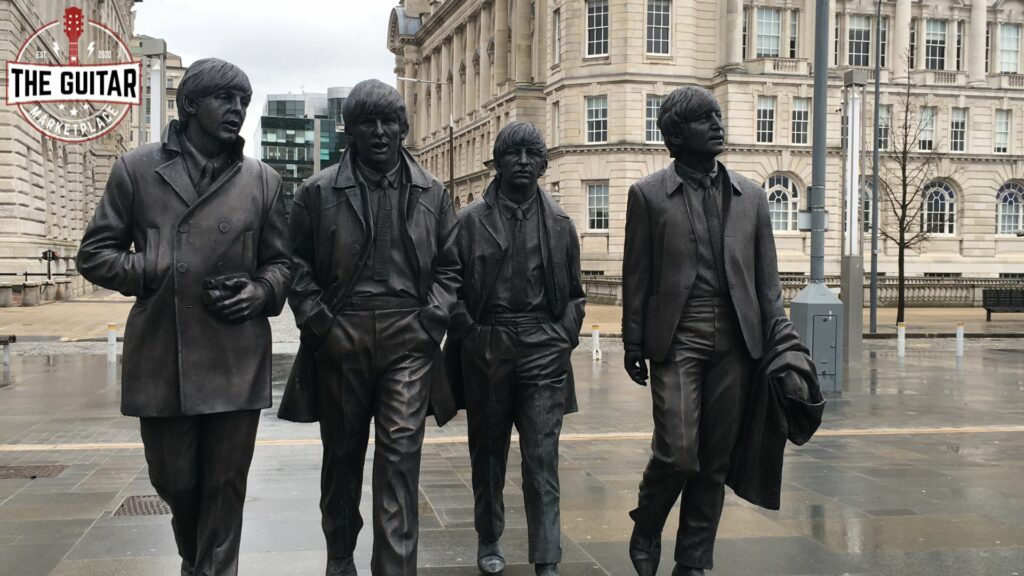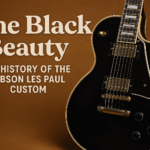Introduction:
Rock music, characterized by its energetic rhythms, amplified guitars, and rebellious spirit, has had an enduring impact on the music scene since its inception. Emerging in the 1950s as a fusion of various genres, including blues, country, and rhythm and blues (R&B), rock music quickly captured the attention of young audiences and became a catalyst for cultural change.
Rooted in the African-American musical traditions and the working-class struggles of the time, rock music gained popularity through its raw, electrifying sound. It offered an outlet for self-expression and became a symbol of youthful rebellion against the societal norms of the era.
With its infectious beats and catchy melodies, rock music transcended racial and social barriers, uniting people from different backgrounds under a shared passion. From the early pioneers like Elvis Presley, Chuck Berry, and Little Richard, who infused rock ‘n’ roll with their charisma and charisma and raw talent, to the British Invasion bands like The Beatles and The Rolling Stones, who brought a new wave of creativity and experimentation, rock music constantly evolved and reinvented itself.
Over the years, rock music has spawned various subgenres, including psychedelic rock, hard rock, punk rock, alternative rock, and many more. Each subgenre reflects the cultural, social, and musical shifts of its time, allowing rock music to remain relevant and adaptable to changing tastes and trends.
As we explore the evolution of rock music from the 1950s to today, we will delve into the transformative moments, influential artists, and cultural impact that have shaped this genre into the powerhouse it is today. Join us on this journey through the decades as we celebrate the vibrant history and legacy of rock music.
The Importance of Rock Music in Shaping Culture

Rock music holds a significant place in the annals of popular culture, leaving an indelible mark on society, fashion, and attitudes. From its early days, rock music challenged societal norms and became the voice of a generation seeking change and self-expression.
In the 1950s, rock ‘n’ roll embodied the rebellious spirit of youth, with its energetic rhythms and provocative lyrics. It served as a vehicle for expressing discontent with the status quo, and its popularity spread like wildfire among teenagers, who embraced it as a symbol of freedom and individuality. This newfound cultural force challenged the conservative values of the time, igniting debates and fueling fears of moral decline.
During the 1960s, the British Invasion brought rock music to new heights, with bands like The Beatles leading the charge. Their infectious melodies and charismatic personalities captivated audiences worldwide, redefining the concept of “rock star” and creating a frenzy of fandom. The music became a unifying force, transcending cultural and geographical boundaries, and fostering a sense of global community.
As rock music continued to evolve, the counterculture movement of the late 1960s and early 1970s embraced it as a medium for expressing anti-establishment sentiments and advocating for social change. The psychedelic and experimental sounds of the era became synonymous with the ideals of peace, love, and personal liberation.
Moreover, rock music has influenced fashion trends and lifestyle choices throughout its history. From the rebellious leather jackets and pompadours of the rock ‘n’ roll era to the psychedelic tie-dye and long hair of the hippie movement, rock music has been closely intertwined with fashion, becoming a source of inspiration for countless individuals.
Rock music has played a pivotal role in shaping popular culture. Its power to challenge conventions, inspire social movements, and influence fashion trends is a testament to its enduring impact. As we explore the evolution of rock music, we will uncover the profound ways in which this genre has shaped and continues to shape our cultural landscape.
The Birth of Rock n Roll in the ’50s

The emergence of rock ‘n’ roll in the 1950s was deeply rooted in the fusion of various musical genres, most notably blues, country, and rhythm and blues (R&B). These genres, originating from different cultural and racial backgrounds, came together to create a revolutionary sound that would shape the future of music.
Blues, with its soulful vocals and expressive guitar work, provided the emotional foundation for rock ‘n’ roll. African-American blues artists like Muddy Waters, B.B. King, and Howlin’ Wolf infused their music with raw intensity, capturing the hardships and joys of everyday life. Their influence can be heard in the vocal stylings and guitar riffs of early rock ‘n’ roll pioneers.
Country music, on the other hand, contributed its storytelling traditions and distinctive twang to the development of rock ‘n’ roll. Artists such as Hank Williams and Johnny Cash brought heartfelt narratives and a strong connection to rural America, resonating with audiences and shaping the lyrical content of rock songs.
Rhythm and blues, with its infectious rhythms and electrifying energy, played a crucial role in the evolution of rock ‘n’ roll. R&B artists like Fats Domino, Ray Charles, and Little Richard brought a vibrant mix of gospel, jazz, and blues, infusing it with a lively and danceable quality. Their exuberant performances and catchy melodies set the stage for the high-energy nature of rock ‘n’ roll.
The convergence of these influences in the 1950s created a new sound that captivated audiences worldwide. Pioneering artists like Elvis Presley, often dubbed the “King of Rock ‘n’ Roll,” blended these elements with their own unique styles, bringing rock music into the mainstream and forever changing the musical landscape.
The birth of rock ‘n’ roll in the 1950s was a result of the convergence of blues, country, and R&B. The emotional depth of blues, the storytelling of country, and the infectious rhythms of R&B provided the foundation for this revolutionary genre. As we explore the evolution of rock music, it becomes clear that these early influences laid the groundwork for the many subgenres and transformations that would follow.
Pioneers and early influencers (Elvis Presley, Chuck Berry, Little Richard)
The birth of rock ‘n’ roll in the 1950s can be attributed to the groundbreaking contributions of several influential artists who shaped the sound, style, and attitude of the genre. Among these pioneers were Elvis Presley, Chuck Berry, and Little Richard.
Elvis Presley, often referred to as the “King of Rock ‘n’ Roll,” burst onto the scene with his magnetic stage presence, powerful voice, and charismatic blend of rock, blues, and country. His fusion of these genres, showcased in hits like “Hound Dog” and “Jailhouse Rock,” captivated audiences and propelled him to unprecedented stardom. Presley’s rebellious image and uninhibited performances challenged social norms, making him an icon of youth culture and a symbol of rock ‘n’ roll’s rebellious spirit.
Chuck Berry, known for his electrifying guitar riffs and clever storytelling lyrics, was another key figure in the development of rock ‘n’ roll. With songs like “Johnny B. Goode” and “Maybellene,” Berry brought a distinct blend of blues, country, and R&B to the forefront of popular music. His innovative guitar solos and energetic stage presence laid the foundation for the future of rock guitar playing and established him as one of rock’s greatest pioneers.
Little Richard, with his flamboyant style, powerful voice, and dynamic piano playing, infused rock ‘n’ roll with an exuberant energy and wild spirit. Songs like “Tutti Frutti” and “Long Tall Sally” showcased his raw and uninhibited vocal delivery, earning him the title of “The Architect of Rock and Roll.” Little Richard’s influence extended beyond his music, as he challenged racial and gender norms in the conservative 1950s, inspiring future generations of artists to express themselves authentically.
Rock ‘n’ roll’s Impact on youth culture and Rebellion
Rock ‘n’ roll quickly became a cultural phenomenon, particularly among the youth of the 1950s, as it provided an outlet for rebellion and self-expression. The energetic and provocative nature of the music resonated with teenagers who sought an escape from the conformity of the era.
Rock ‘n’ roll became synonymous with youthful rebellion, symbolizing a break from traditional values and a rejection of societal norms. It represented a generational shift, with young people embracing the music as a form of liberation and identity. The rebellious spirit of rock ‘n’ roll was often reflected in the lyrics, which touched upon themes of love, freedom, and non-conformity.
Furthermore, rock ‘n’ roll played a pivotal role in breaking down racial barriers. During a time of segregation and racial tension, the music brought together audiences of different backgrounds. African-American artists like Little Richard and Chuck Berry achieved widespread success and garnered cross-cultural appeal, challenging the racial divisions of the time. This integration of musical influences and audiences set the stage for the future of rock music as a genre that transcended racial boundaries.
In conclusion, the birth of rock ‘n’ roll in the 1950s was marked by the contributions of visionary artists such as Elvis Presley, Chuck Berry, and Little Richard. Their innovative music and rebellious attitudes reshaped popular music and laid the foundation for the rock ‘n’ roll movement. The genre’s impact extended beyond the music itself, as it became a symbol of youth rebellion, a catalyst for social change, and a powerful force in breaking down racial barriers. The spirit and influence of these early pioneers continue to resonate in rock music to this day.
The British Invasion of the 1960s

The Beatles and their revolutionary sound
The British Invasion of the 1960s marked a turning point in the evolution of rock music, as a wave of British bands, led by the legendary Beatles, took the world by storm. The Beatles’ impact on popular music and culture cannot be overstated, as they revolutionized the sound, songwriting, and image of rock music.
The Beatles, consisting of John Lennon, Paul McCartney, George Harrison, and Ringo Starr, brought a fresh and innovative approach to rock. Their catchy melodies, harmonies, and thoughtful lyrics captivated audiences and showcased their incredible musical prowess. From their early hits like “She Loves You” and “I Want to Hold Your Hand” to their groundbreaking albums like “Sgt. Pepper’s Lonely Hearts Club Band” and “Abbey Road,” the Beatles consistently pushed the boundaries of what rock music could achieve.
Their experimentation with studio techniques, incorporation of orchestral arrangements, and exploration of diverse musical styles expanded the sonic possibilities of rock music. The Beatles’ success not only influenced countless artists who followed, but it also transformed the perception of popular music as a serious art form.
The Rolling Stones and the rise of blues-based rock
Alongside the Beatles, another iconic British band, The Rolling Stones, played a pivotal role in the British Invasion and the evolution of rock music. While the Beatles leaned towards pop and experimentation, The Rolling Stones embraced a raw, bluesy sound that resonated with audiences hungry for a grittier form of rock ‘n’ roll.
Drawing inspiration from American blues legends like Muddy Waters and Howlin’ Wolf, The Rolling Stones infused their music with a rebellious edge. Their early hits like “Satisfaction” and “Paint It Black” showcased Keith Richards’ distinctive guitar riffs, Mick Jagger’s charismatic vocals, and a raucous energy that defined their sound.
The Rolling Stones’ commitment to the blues roots of rock music set them apart, and their influence on the genre cannot be overstated. They brought a swagger and a sense of danger to their performances, becoming the embodiment of rock ‘n’ roll excess and rebellion. Their longevity and ability to adapt their sound over the years have solidified their status as one of the greatest rock bands of all time.

British bands’ influence on American rock (The Who, The Kinks)
The British Invasion not only introduced the world to the Beatles and The Rolling Stones but also showcased the immense talent of other British bands that left an indelible mark on rock music. Two notable acts that emerged during this period were The Who and The Kinks.
The Who, led by Roger Daltrey and Pete Townshend, brought a powerful and aggressive sound to rock music. Their anthems like “My Generation” and “Baba O’Riley” captured the frustrations and rebellious spirit of youth, while their live performances, featuring smashing guitars and explosive stage antics, became legendary.
The Kinks, fronted by Ray Davies, explored a wide range of musical styles and lyrical themes. From their early hits like “You Really Got Me” to more complex concept albums like “Arthur” and “Lola Versus Powerman and the Moneygoround, Part One,” The Kinks showcased a versatility and storytelling ability that set them apart.
These British bands influenced American rock artists of the time, contributing to the broader evolution of the genre. The British Invasion not only changed the landscape of popular music but also ignited a cultural exchange between the United States and the United Kingdom, fostering a creative synergy that would shape rock music for decades to come.
The British Invasion of the 1960s brought forth groundbreaking bands like The Beatles, The Rolling Stones, The Who, and The Kinks, who pushed the boundaries of rock music. The Beatles revolutionized the sound and perception of popular music, while The Rolling Stones brought a raw and bluesy edge. The influence of these British bands extended beyond their own success, inspiring American artists and sparking a cultural exchange that shaped the future of rock music. The impact of the British Invasion remains palpable, as the innovations and artistic achievements of this era continue to resonate in the rock genre to this day.
The Evolution of Rock in the 1970s and 1980s

The Rise of Progressive Rock and Heavy Metal
The 1970s and 1980s witnessed the diversification and evolution of rock music into various subgenres, each with its own distinct characteristics. Two prominent subgenres that emerged during this period were progressive rock and heavy metal, both of which pushed the boundaries of musical complexity and intensity.
Progressive rock, exemplified by bands like Pink Floyd, Genesis, and Yes, expanded the possibilities of rock music by incorporating elements of classical music, jazz, and experimental sounds. These bands crafted lengthy compositions, intricate instrumentation, and thought-provoking lyrical themes. The genre’s progressive nature allowed for extended instrumental solos, conceptual album themes, and a focus on virtuosity.
Heavy metal, on the other hand, emerged as a louder, heavier, and more aggressive form of rock. Bands like Black Sabbath, Led Zeppelin, and Deep Purple pioneered the genre with their distorted guitar riffs, thunderous drums, and powerful vocals. Heavy metal music often delved into darker lyrical themes, employing intricate guitar solos and high-energy performances to create a visceral and cathartic experience for listeners.
The Punk Rock Rebellion and the Birth of New Wave
As the 1970s progressed, a backlash against the perceived excesses of mainstream rock music gave rise to the punk rock movement. Punk rock, characterized by its raw energy, minimalist song structures, and confrontational lyrics, challenged the established norms of the music industry. Bands like The Ramones, The Sex Pistols, and The Clash embraced a do-it-yourself ethos, rejecting the polished and commercialized sound of mainstream rock.
Punk rock’s rebellious spirit paved the way for the emergence of new-wave music in the late 1970s and early 1980s. New wave bands like Blondie, Talking Heads, and The Police blended elements of punk, pop, and electronic music, creating a more polished and danceable sound. New wave was characterized by its catchy hooks, synthesizer-driven melodies, and a fusion of various musical styles.
The Rise of Alternative Rock and Grunge
In the 1980s and early 1990s, the alternative rock movement gained traction, offering an alternative to the mainstream rock sound. Bands such as R.E.M., The Smiths, and Sonic Youth infused rock music with influences from punk, indie rock, and post-punk. Alternative rock embraced a DIY ethos and emphasized authenticity and introspection in its lyrics.
One of the most influential subgenres of alternative rock was grunge, which originated in the Pacific Northwest of the United States. Bands like Nirvana, Pearl Jam, and Soundgarden fused elements of punk, metal, and alternative rock to create a distinctive sound characterized by distorted guitars, anguished vocals, and introspective lyrics. Grunge’s raw and emotionally charged music resonated with a disillusioned youth culture and became a defining sound of the early 1990s.
In conclusion, the 1970s and 1980s witnessed the diversification and evolution of rock music into subgenres like progressive rock, heavy metal, punk rock, new wave, alternative rock, and grunge. These subgenres pushed the boundaries of musical experimentation, lyrical themes, and performance styles, shaping the future of rock music. The impact of these movements is still felt in contemporary rock music, as they continue to inspire new generations of artists to explore and innovate within the genre.
Rock’s Influence on Other Genres
Rock Fusion: Blending Rock with Other Musical Styles
Rock music has consistently influenced and been influenced by various other genres throughout its history. One notable phenomenon is the fusion of rock with different musical styles, resulting in exciting and innovative subgenres.
- Jazz-Rock Fusion: In the late 1960s and early 1970s, jazz and rock musicians began exploring the fusion of their respective genres. Bands like Miles Davis, Weather Report, and Mahavishnu Orchestra combined the improvisational nature of jazz with the energy and instrumentation of rock. This fusion led to the creation of complex and dynamic compositions, incorporating elements of funk, Latin rhythms, and experimental techniques.
- Funk Rock: Another fusion genre that emerged in the 1970s was funk rock. Artists such as Sly and the Family Stone, Red Hot Chili Peppers, and Prince blended the rhythmic grooves and infectious basslines of funk with the raw power of rock guitars and vocals. This hybrid sound brought a danceable and energetic quality to rock music, inspiring future generations of funk rock bands.
Rock Music in Pop: Pop-Rock and Power Pop
Rock’s influence on pop music has been undeniable, with many pop artists incorporating rock elements into their sound. Two prominent subgenres that emerged from this fusion are pop-rock and power pop.
- Pop-Rock: Pop-rock combines the catchy melodies and hooks of pop music with the instrumentation and attitude of rock. Bands like The Beatles, Fleetwood Mac, and Coldplay have achieved great success by infusing their pop sensibilities with rock aesthetics, creating radio-friendly hits that resonate with a wide audience.
- Power Pop: Power pop emerged in the 1970s as a distinct subgenre within pop-rock. Artists like Cheap Trick, Big Star, and The Raspberries crafted melodic, guitar-driven songs with strong vocal harmonies. Power pop embraced the energy and attitude of rock while maintaining a pop-oriented song structure and melodic sensibility.

Rock and Hip Hop: Rap Rock and Nu-Metal
Rock’s influence extended to the world of hip hop, resulting in the fusion subgenres of rap rock and nu-metal.
- Rap Rock: Rap rock emerged in the late 1980s and early 1990s, combining the aggressive and rhythmic elements of hip hop with the instrumentation and attitude of rock. Bands like Rage Against the Machine, Beastie Boys, and Linkin Park incorporated rap vocals, heavy guitar riffs, and turntable scratching to create a powerful and energetic sound.
- Nu-Metal: Nu-metal, which gained popularity in the late 1990s and early 2000s, blended elements of alternative metal, rap rock, and industrial rock. Bands like Korn, Limp Bizkit, and System of a Down combined heavy guitar riffs, anguished vocals, and electronic elements with rap-inspired verses. Nu-metal had a significant impact on popular music, reaching a wide audience and influencing subsequent generations of rock and hip hop artists.
Rock’s influence on other genres has resulted in exciting fusion subgenres. Jazz-rock fusion, funk rock, pop-rock, power pop, rap rock, and nu-metal have showcased the versatility and cross-pollination of rock music. These fusions have contributed to the evolution of popular music, breaking down genre barriers and inspiring new artistic directions. The interplay between rock and other genres continues to shape the contemporary music landscape.
The Evolution of Rock Music in the 21st Century
Alternative Rock Music and Indie Revival
The 21st century has witnessed the continued evolution of rock music with the rise of alternative rock and the revival of indie rock. These subgenres have played a significant role in shaping the sound and direction of rock in recent years.
Alternative rock, which emerged in the 1980s and ’90s, experienced a resurgence in the 2000s with bands like Radiohead, Foo Fighters, and Muse leading the way. These artists pushed the boundaries of rock, incorporating experimental elements, atmospheric soundscapes, and introspective lyrics. Alternative rock in the 21st century has embraced a wide range of influences, ranging from electronic music to progressive rock, resulting in a diverse and innovative sonic landscape.
Alongside alternative rock, indie rock has experienced a remarkable revival. Indie rock bands like Arctic Monkeys, The Black Keys, and Vampire Weekend have gained popularity for their raw and authentic approach to rock music. Drawing inspiration from classic rock, garage rock, and post-punk, indie rock combines catchy melodies, clever lyrics, and a DIY ethos that resonates with a new generation of music lovers.
The Rise of Post-Rock and Experimental Sounds
In the 21st century, the boundaries of rock music have been further expanded through the emergence of post-rock and the exploration of experimental sounds. Post-rock, pioneered by bands like Sigur Rós, Explosions in the Sky, and Godspeed You! Black Emperor, takes a more atmospheric and textural approach to rock. It often incorporates elements of ambient music, classical arrangements, and lengthy instrumental passages, creating immersive and cinematic soundscapes.
Experimental rock has also gained traction, with artists like Radiohead, Tame Impala, and Animal Collective pushing the boundaries of what rock music can sound like. These bands incorporate elements of electronic music, psychedelia, and avant-garde influences to create innovative and unpredictable sonic landscapes. Experimentation with unconventional song structures, sampling, and production techniques has become a hallmark of the genre, allowing for new and exciting sonic possibilities.

Rock’s Integration with Pop and Electronic Music
In the 21st century, rock has increasingly integrated with pop and electronic music, resulting in hybrid genres that blend various influences and styles.
Pop-rock, characterized by catchy hooks, melodic sensibilities, and radio-friendly appeal, has remained a popular subgenre. Bands like Maroon 5, Imagine Dragons, and OneRepublic have achieved mainstream success by infusing rock elements into their pop sound, appealing to a wide audience with their infectious melodies and energetic performances.
Electronic rock, also known as electro-rock or synth-rock, has emerged as a fusion of rock instrumentation with electronic music production. Bands like The Killers, Muse, and MGMT have embraced synthesizers, drum machines, and electronic textures, creating a hybrid sound that combines the energy of rock with the infectious beats and sonic experimentation of electronic music.
In summary, the evolution of rock in the 21st century has seen the resurgence of alternative rock, the revival of indie rock, the exploration of post-rock and experimental sounds, and the integration of rock with pop and electronic music. These developments have contributed to the diverse and ever-evolving nature of rock music, showcasing its ability to adapt, innovate, and captivate audiences in the modern era. As the music landscape continues to evolve, rock remains a vibrant and influential genre that continues to inspire and shape the future of popular music.
Check out our other blog posts here
-
 Boost Your Odds – Win Tickets Instantly!£1.99Per Entry
Boost Your Odds – Win Tickets Instantly!£1.99Per Entry -
 Epiphone 1963 Firebird I in Silver Mist£0.25Per Entry
Epiphone 1963 Firebird I in Silver Mist£0.25Per Entry -
 Brian May Guitars Limited Edition Special in Baby Blue£0.12Per Entry
Brian May Guitars Limited Edition Special in Baby Blue£0.12Per Entry -
 Fender FSR Standard Stratocaster in Flame Orange£0.12Per Entry
Fender FSR Standard Stratocaster in Flame Orange£0.12Per Entry -
 Epiphone Les Paul Special In Pelham Blue£1.99Per Entry
Epiphone Les Paul Special In Pelham Blue£1.99Per Entry -
 Epiphone Dove Studio in Violinburst£0.99Per Entry
Epiphone Dove Studio in Violinburst£0.99Per Entry -
 Fender Limited Edition Player II Telecaster in Moonlight Drive with Seymour Duncan Hotrails£1.99Per Entry
Fender Limited Edition Player II Telecaster in Moonlight Drive with Seymour Duncan Hotrails£1.99Per Entry -
 Boost Your Odds – Win Tickets Instantly!£1.99Per Entry
Boost Your Odds – Win Tickets Instantly!£1.99Per Entry -
 ESP LTD EC-1000 in Black£2.99Per Entry
ESP LTD EC-1000 in Black£2.99Per Entry







